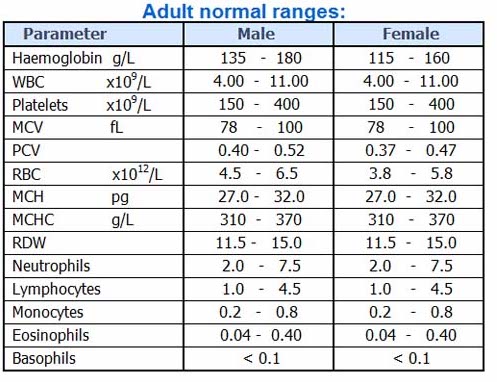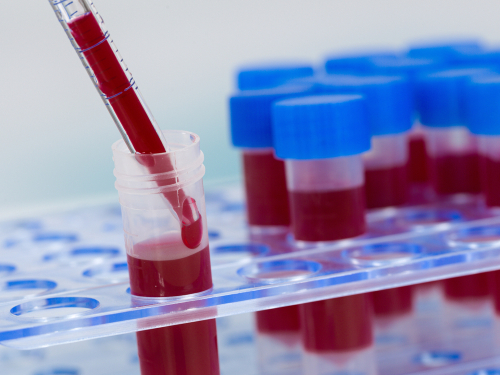What is Full Blood Count/Complete Blood Count?
CBC is a group of tests that evaluate the cells circulating in your blood, including red blood cells (RBCs), white blood cells (WBCs), and platelets (PLTs). The CBC can evaluate your overall health and detect a variety of diseases and conditions, such as infections, anemia and leukemia (cancer of the blood-forming tissues).
What is included in a FBC?
A standard CBC includes:
Red blood cell (RBC) tests
Red blood cell (RBC) count is a count of the actual number of red blood cells in your blood sample.
Hemoglobin(Hb) measures the total amount of the oxygen-carrying protein in the blood, which generally reflects the number of red blood cells in the blood.
Hematocrit measures the percentage of your total blood volume that consists of red blood cells.
Red blood cell indices provide information on the physical features of the RBCs:
- Mean corpuscular volume (MCV) is a measurement of the average size of your red blood cells.
- Mean corpuscular haemoglobin (MCH) is a calculated measurement of the average amount of hemoglobin inside your red blood cells.
- Mean corpuscular haemoglobin concentration (MCHC) is a calculated measurement of the average concentration of haemoglobin inside your red blood cells.
Red cell distribution width (RDW) is a measurement of the variation in the size of your red blood cells.
The FBC may also include reticulocyte count, which is a measurement of the absolute count or percentage of newly released young red blood cells in your blood sample.
White blood cell (WBC) tests
White blood cell (WBC) count is a count of the total number of white blood cells in your blood sample. White blood cell differential may be included as part of the CBC or may be done in follow-up if the WBC count is high or low. The WBC differential identifies and counts the number of the five types of white blood cells present (neutrophils, lymphocytes, monocytes, eosinophils, and basophils). The individual count can be reported as an absolute count and/or as a percentage of total.
Platelet tests
The platelet count is the number of platelets in your blood sample.
Mean platelet volume (MPV) may be reported with a CBC and is a measurement of the average size of platelets. Platelet distribution width (PDW) may also be reported with a CBC. It reflects how uniform platelets are in size.

What does an abnormal CBC report mean?
Abnormalities in blood cell count can be caused by various reasons, depending on which blood component is involved. A CBC is not a definitive diagnostic test. Blood cell counts that are too high or too low could signal a wide variety of conditions. Specialized tests are needed to diagnose a specific condition.
Conditions that could cause an abnormal CBC and may require additional testing include:
- Iron or other vitamin and mineral deficiencies
- Bleeding disorders
- Heart disease
- Autoimmune disorders, in which your immune system mistakenly attacks your body.
- Bone marrow problems
- Cancer
- Infection or inflammation
- Reaction to medication
If your CBC shows abnormal levels, your doctor may order another blood test to confirm results. They may also order other tests to help further evaluate your condition and confirm a diagnosis.
What are the risks of abnormal CBC count?
An abnormal blood cell count comes with a lot of risks. For different kinds of abnormalities, the risks they bear with them are different. For instance, an abnormal RBC count indicates anaemia and iron deficiency and may pose a threat of heart disease, or a possible chronic kidney disease or chronic lung disease. The ratio of RBC to plasma may hint to dehydration in a person if lower than normal.
A higher WBC count is called leukocytosis, and a lower WBC count is called leukopenia. Both can pose serious risks if left untreated for long. Leukocytosis may indicate an infection in the body, while leukopenia is an alarm that hints towards serious deficiency of WBC. This leads to the weakening of our immune system and can even prove fatal in case of serious infections.
How do I maintain my CBC count?
Maintaining normal blood cell counts isn’t hard at all unless you’re suffering from severe complications. An average person with an abnormal blood count can easily gain normal FBC numbers in a short span of time just by eating the right nutrients and avoiding unhealthy practices.
Green leafy vegetables rich in iron are great for those who’ve a low RBC count. Citrus fruits rich in Vitamin C are crucial for patients with low WBC. Intake of food rich with nutrients that we lack is a simple solution to maintain a normal blood cell count. Avoiding smoking, drinking, and consuming too much fast food will also aid us in the process.







